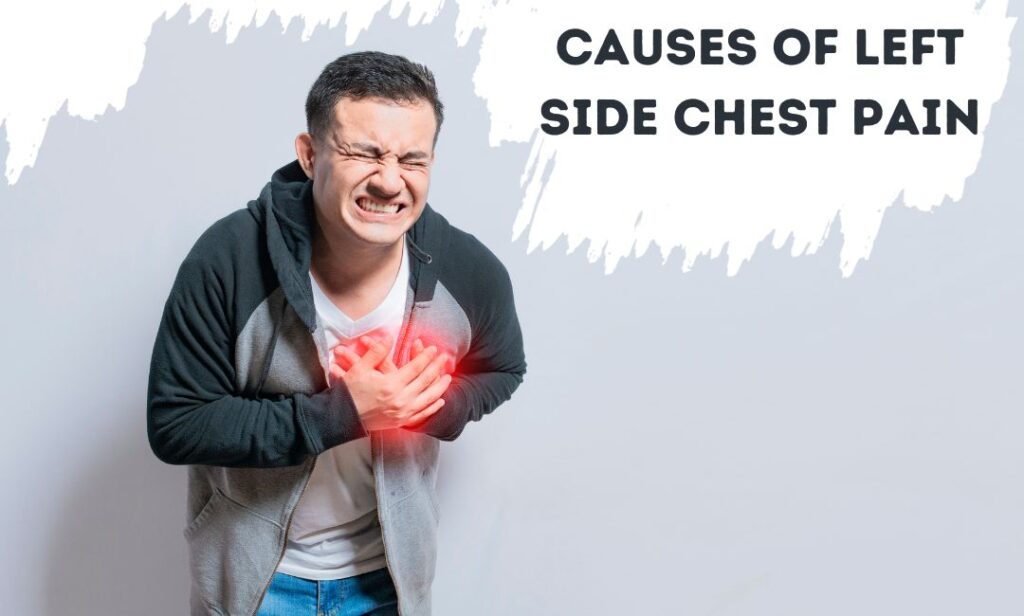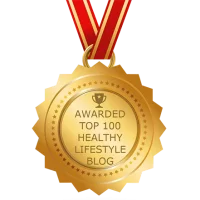Feeling pain in your chest can be one of the most unsettling experiences. When the discomfort is specifically on the chest pain left side, many people immediately fear it could be a heart attack. While it’s true that the left side of the chest is home to the heart, not every ache or sharp twinge is heart-related. In fact, left side chest pain can come from a variety of causes ranging from minor muscle strain to more serious medical conditions that require immediate attention.
In this article, we’ll explore the possible reasons for chest pain on the left side, when you should seek urgent medical help, and how lifestyle choices can influence your heart and lung health.
Why Chest Pain on the Left Side Can Be Concerning
Your heart sits slightly to the left of your chest, which is why discomfort in that area often raises alarms. But the chest also contains other important organs and structures such as the lungs, ribs, muscles, esophagus, and even nerves—all of which can trigger pain.
The key is to pay attention to the type, duration, and accompanying symptoms of the pain. Sharp stabbing pain that worsens when breathing deeply may be very different in cause compared to a dull ache that radiates to the arm or jaw.
So, let’s break down the most common culprits behind chest pain left side and what each might mean.
1. Heart-Related Causes
Heart Attack
When most people feel pain on the left side of the chest, their first thought is a heart attack. A heart attack happens when blood flow to part of the heart muscle is blocked, usually due to a clot in a coronary artery.
Typical symptoms include:
- Pressure or squeezing in the chest that lasts more than a few minutes
- Pain spreading to the arm, shoulder, back, neck, or jaw
- Shortness of breath, dizziness, sweating, or nausea
If you experience these symptoms, call emergency services immediately.
Angina
Angina isn’t a heart attack, but it can feel very similar. It occurs when the heart isn’t getting enough oxygen-rich blood due to narrowed arteries. Angina often feels like pressure or tightness in the left side of the chest, especially during physical exertion or stress.
Myocarditis & Pericarditis
Inflammation of the heart muscle (myocarditis) or the sac surrounding the heart (pericarditis) can also cause sharp, stabbing pain in the chest. This pain might get worse when lying down or taking a deep breath.
2. Lung-Related Causes
The lungs sit on both sides of your chest, and lung issues can often trigger left side chest pain.
- Pleurisy (Pleuritis): This is inflammation of the lining around the lungs. It causes sharp pain, especially when breathing deeply. Many people ask, “Why does it hurt when I take a deep breath on my left side?”—pleurisy is one of the main reasons.
- Pneumonia: A lung infection can lead to pain, fever, and difficulty breathing.
- Pulmonary Embolism: A blood clot that travels to the lungs can cause sudden, severe chest pain, shortness of breath, and rapid heartbeat. This is a medical emergency.
3. Digestive System Causes
It might surprise you, but problems in your digestive system can mimic heart-related chest pain.
- Acid Reflux (GERD): Stomach acid flowing back into the esophagus can create a burning sensation often mistaken for heart pain.
- Hiatal Hernia: This occurs when part of the stomach pushes up through the diaphragm, causing chest discomfort.
- Gallstones or Pancreatitis: Though felt more on the right side, these conditions can sometimes cause pain that radiates to the left side chest.
4. Muscle, Bone, and Nerve Causes
Not all chest pain left side is internal. Sometimes, it’s as simple as musculoskeletal strain.
- Muscle Strain: Overexertion at the gym, poor posture, or even an awkward movement can cause localized pain.
- Costochondritis: This is inflammation of the cartilage connecting the ribs to the breastbone, often causing tenderness in the chest wall.
- Injury: A bruised or fractured rib can produce sharp, localized pain that worsens with movement or breathing.
5. Anxiety and Stress
It’s not just physical conditions—mental health can play a huge role too. Anxiety and panic attacks often cause left side chest pain that feels like a tightening or squeezing sensation. People may also experience rapid heartbeat, sweating, trembling, and shortness of breath.
This is why it’s so important not to dismiss chest pain as “just stress” without checking it. Stress may contribute, but it’s always better to rule out more serious causes first.
When to See a Doctor Immediately
Some chest pain can be monitored, but there are times when waiting is dangerous. Seek urgent medical attention if you experience:
- Sudden, intense pressure or squeezing pain in the chest
- Pain radiating to your arm, jaw, or back
- Shortness of breath, dizziness, fainting, or cold sweats
- Chest pain accompanied by a rapid or irregular heartbeat
- Severe pain when breathing deeply that doesn’t ease with rest
Remember, if you’re asking yourself, “Why does it hurt when I take a deep breath on my left side?”—and the pain is severe or sudden—it’s always safer to get checked by a medical professional.
How Doctors Diagnose Left Side Chest Pain
When you visit a doctor for chest pain, they will start by asking detailed questions about your symptoms, medical history, and lifestyle. Depending on your answers, they may recommend tests such as:
- Electrocardiogram (EKG): To check your heart’s electrical activity.
- Chest X-ray: To look for lung or rib issues.
- Blood tests: To detect markers of a heart attack or infection.
- CT scan or MRI: For a more detailed view of the chest.
- Stress test: To see how your heart responds during exercise.
Treatment Options
Treatment depends entirely on the cause:
- Heart-related issues: May require medications like blood thinners, beta-blockers, or even surgical interventions.
- Lung problems: Antibiotics, blood thinners, or oxygen therapy may be used.
- Digestive causes: Acid-reducing medications or dietary changes often help.
- Musculoskeletal pain: Rest, pain relievers, and physical therapy can ease symptoms.
- Anxiety: Stress management, therapy, or medication may be recommended.
How to Reduce the Risk of Left Side Chest Pain
While not every cause can be prevented, there are lifestyle changes that significantly reduce your risk of heart- or lung-related chest pain:
- Eat a diet rich in vegetables, fruits, lean proteins, and whole grains.
- Limit salt, processed foods, and alcohol.
- Quit smoking and avoid tobacco products.
- Exercise regularly—both cardio and strength training.
- Manage stress with yoga, meditation, or deep-breathing exercises.
- Maintain a healthy weight and blood pressure.
Final Thoughts
Experiencing chest pain on the left side should never be ignored. While it may sometimes be caused by something minor, like a muscle strain, it can also indicate serious conditions such as a heart attack or lung problem. If you’ve ever wondered, “Why does it hurt when I take a deep breath on my left side?” the cause could range from pleurisy to a heart-related issue—making a professional evaluation essential.
The bottom line: if your chest pain is sudden, severe, or unexplained, seek immediate medical care. For ongoing mild discomfort, schedule a visit with your doctor to rule out potential causes and develop a plan for better heart and overall health.
If you are experiencing chest pain on the left side or constant discomfort and need expert guidance, don’t wait—connect with Dr. Cynthia for specialized care and holistic treatment options.
You can see this link for more information and get in touch with the doctor: https://g.co/kgs/yAfjNB9





